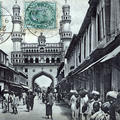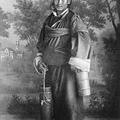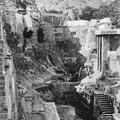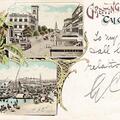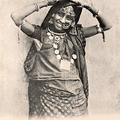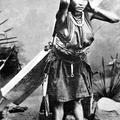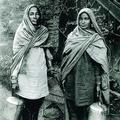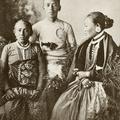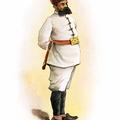Johnston & Hoffmann
Goorkha Soldiers
These Gurkha soldiers were possibly photographed in the firm's Darjeeling studio (opened 1890) or Simla a few years later.
A Boothea Milkman
A studio portrait full of contradictions. The milkman from Darjeeling of Tibetan ancestry is shown with an English church in the deep background.
Zalra Tank, Ajmere
Better known as the Jhalra natural water tank adjacent to the tomb of the 13th century Sufi Khawaja Moinuddin Chishti. Hundreds of thousands of people come here each year for the urs (the anniversary of the death) of a Sufi saint.
Greetings From Calcutta
A very early postcard from one of Kolkata's largest retailers. Postmarked Dec. 2, 1898 and addressed to Master Geoffrey Corbett, Whiltey, Yorks., England: "To my godson & all his relations G.C. [sp?]."
A Benares Dancing Girl
Note how nicely the stamp is positioned in line with the woman's arms; according to the so-called "language of stamps" current at the turn of the century, this stamp position might mean the sender is asking "Do you love me?" or even "Your love
Cooly Woman, Darjeeling.
Although taken in the firm's studio, with the woman posing upright, one can from this portrait and the wooden beam infer the literally backbreaking work hillstation workers endured.
Hill Milk Women
This postcard is likely based on a portrait by Johnston & Hoffmann of 22 Chowringhee [also Chourangi] Road, Kolkata, one of the most storied photographic firms in British India.
A Group of 3 Nepaulese
This rare photograph of Nepalis was likely taken in the hillstation of Darjeeling in a studio.
Native Constable
The Indian Councils Act of 1861 was the foundation for the Indian Police Service, one whose fine exemplars was this Calcutta Policeman, which the emblem on his belt so proudly proclaims. His instrument of choice is the lathi, from the Bengali word

